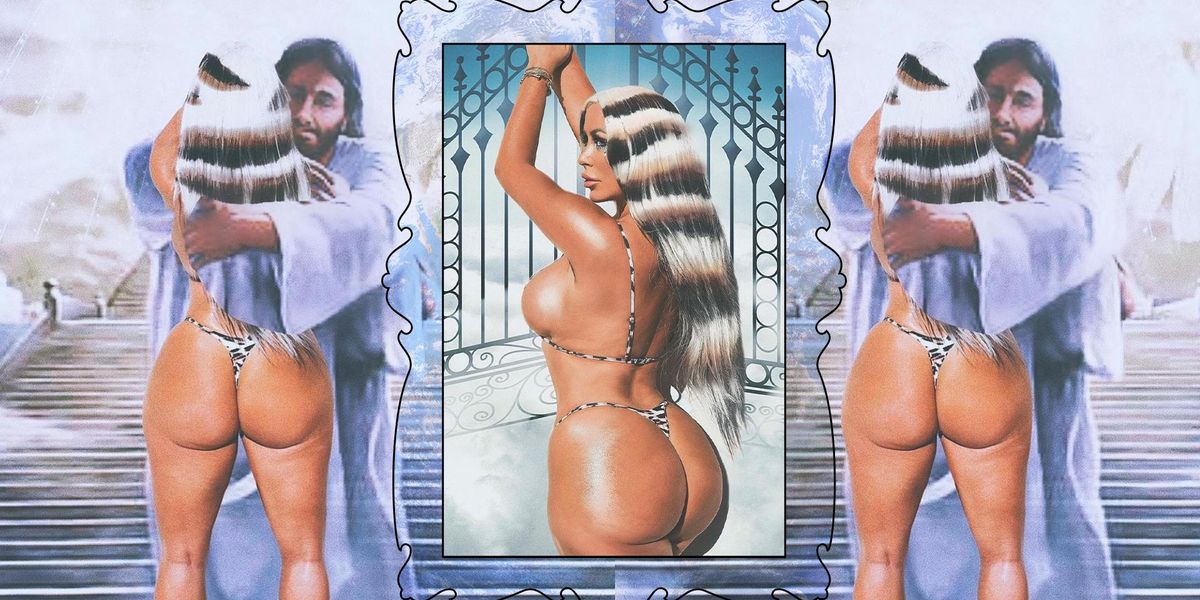
It’s not what it looks like: Aubrey O’Day isn’t masquerading as a travel influencer, but she’s not not leaving room for her 953K followers to see her as the jet-setting IG Baddie archetype. Embracing the gray space between reality and illusion, O’Day’s Instagram is, according to the Dumblonde and Danity Kane singer, a work of art.
For months, O’Day has been quietly posting heavily edited vacation photos from destinations like Greece and Bali. Already recognized for using an oversaturated style with surreal edits, nothing seemed out of the ordinary for locals. That is, until TikTok user @residualdata called into question the legitimacy of O’Day’s posts in a since-deleted video, alleging that the singer has been pretending to travel by photoshopping herself into various global destinations.
\u201cJesus.\u201d— Oh Hell Beckham Jr (@Oh Hell Beckham Jr) 1660875900
The TikTok went viral, causing a social media circus and subsequent media coverage about whether or not O’Day was traveling the real world. O’Day went briefly private, although internet archivists were quick to preserve and share her oeuvre of work:
\u201cArchiving fakest Aubrey O\u2019Day vacation photos\u201d— tyler (Anita Mann) (@tyler (Anita Mann)) 1661178255
Upon her return to Instagram, less than 24 hours later, O’Day posted a photoshopped image of her ascending heavenly stairs and hugging a pixelated Jesus — in a leopard print thong and striped wig, nonetheless. In the caption, she defended her approach to the platform. “If I want my Instagram to be curated like a museum of ART then that’s what the fuck is going to happen. I’m an artist, a REAL creator,” she wrote.
Elaborating on her process, O’Day demanded respect for her aesthetic. “I work hard to give y’all beautiful content that feels the way the places I travel vibrate,” she said, “and I get nothing from sharing the beauty other than the joy of wanting y’all to vibrate high with me.”
Perhaps she is really high when editing, for which we’d like to informally commission an “I Shoulda Never Smoke That Shit Now I’m In Bora Bora” meme. Maybe she actually did travel to each destination and hopped on Photoshop afterward to dial up the saturation, plopping her favorite photos against the best backdrops. (We’d be lying if we didn’t admit to doing the same on Picnik in middle school.)
Or maybe O’Day is the internet equivalent of a great expressionist painter. After all, as she noted, “I do all of my creative from my music to my flicks,” including her “hair, glam, nails, styling, backdrops, editing, shooting.”
When influencers like the Kardashians subtly alter their bodies, they too create a new digital reality. This begs the question of whether O’Day’s flagrant photoshopping is, in some ways, more honest for calling attention to itself than Kim or Khloe’s consistent, discreet Facetuning. It all boils down to O’Day’s own words: “I’m an artist, I’m a REAL creator.”
The paradox of creating reality perfectly captures what it means to make things online. Of course, questions surrounding digital art, and how we can define it, is nothing new. It is paralleled in debates of the artist vs. art and where memes fit into the whole conversation. O’Day seems to have the memetic functions covered:
\u201cAubrey O\u2019day in Paris !\u201d— FEATURE ME 1# STAN (@FEATURE ME 1# STAN) 1661067513
\u201cAubrey O'Day needs to be stopped\u201d— ti\u00f1a colada\ud83c\udf79 (@ti\u00f1a colada\ud83c\udf79) 1661086561
\u201cAubrey O'Day stuns in new photo taken at the iconic "We Are Our Mountains" sculpture in Artsakh.\u201d— \u041a\u0435\u0448You Updates \uea00 (@\u041a\u0435\u0448You Updates \uea00) 1661029880
Her artistic practice has all the defining traits of memetics: it is replicable, transmissible and malleable to the experiences of those who engage with it. O’Day’s creations are the epitome of romanticizing your life. Whether intentional or not, she satirizes the aspirational lifestyles of travel influencers on social media, opening up space for dialogue on class, body politics and truth in the digital age.
“The weather isn’t always perfect when I shoot and I vacation alone,” O’Day continued in her caption, emphasizing the ease of her fantasies. “I don’t need to be flown places. Let alone the fact that a lot of the shots I give y’all are in places you have to spend hours scaling mountains to get to.”
Trying to fit O’Day, or any other public figure, into a 1:1 square box on Instagram is a thought exercise at best. Does it really matter if she’s genuinely traveled to Greece and Bali, or if she actually looks like that in her bikini at Joshua Tree?
In navigating any digital space, we never see the real thing. The way we represent ourselves online is just that, a representation. Claims of inauthenticity miss the point that everything we see online is already mediated — a curated version of our lives that include, omit or exaggerate pieces of the truth.
To that end, O’Day considers herself a “creative director.” She said, “I like to create an essence of what beauty is to me. A vibe. A feeling. A pic of me drenched with pit stains after hiking for 2 hours to a location just doesn’t excite me visually.. it sadness [sic] me that so many people need the picture to look that way in order to feel like my travels were real, or that my experiences and growth are authentic.”
The central tenet of being terminally online remains a need to embrace subjectivity, recognizing our shortcomings in representing the real world. When we demand authenticity on a medium such as Instagram do we, too, play with God, ascending the sparkling staircase to dance with Jesus in a leopard print thong?
Simply put:
\u201cAubrey O\u2019Day taking vacations in the metaverse. Y\u2019all gotta mind y\u2019all business \ud83d\ude2d\u201d— MBali \ud83d\udcab (@MBali \ud83d\udcab) 1660954009
Photo via Instagram/@aubreyoday